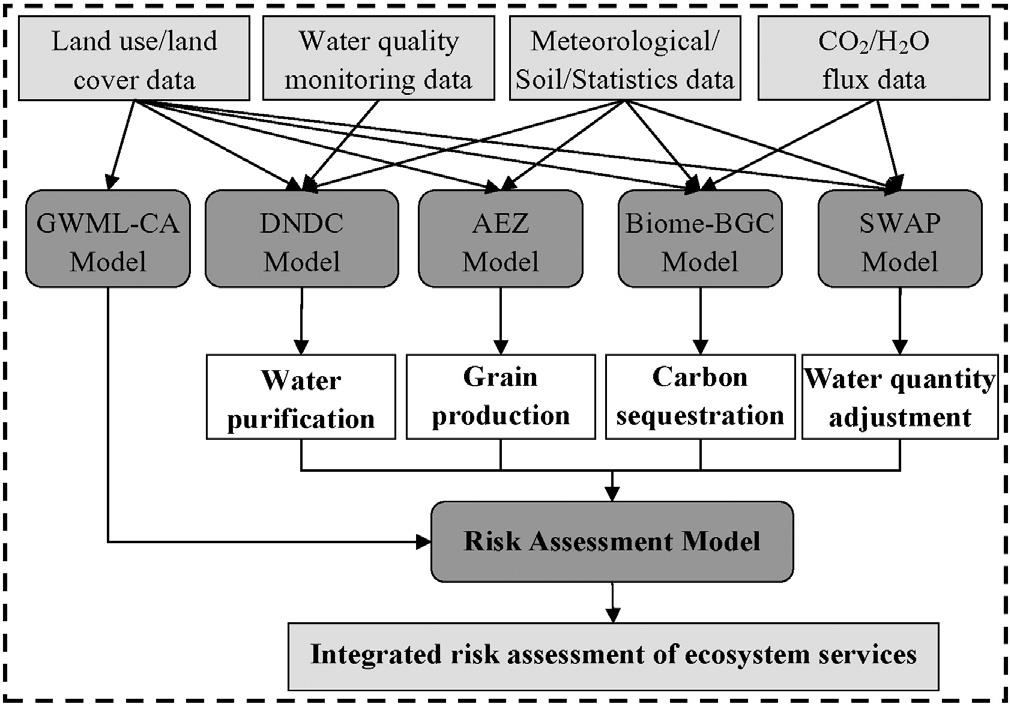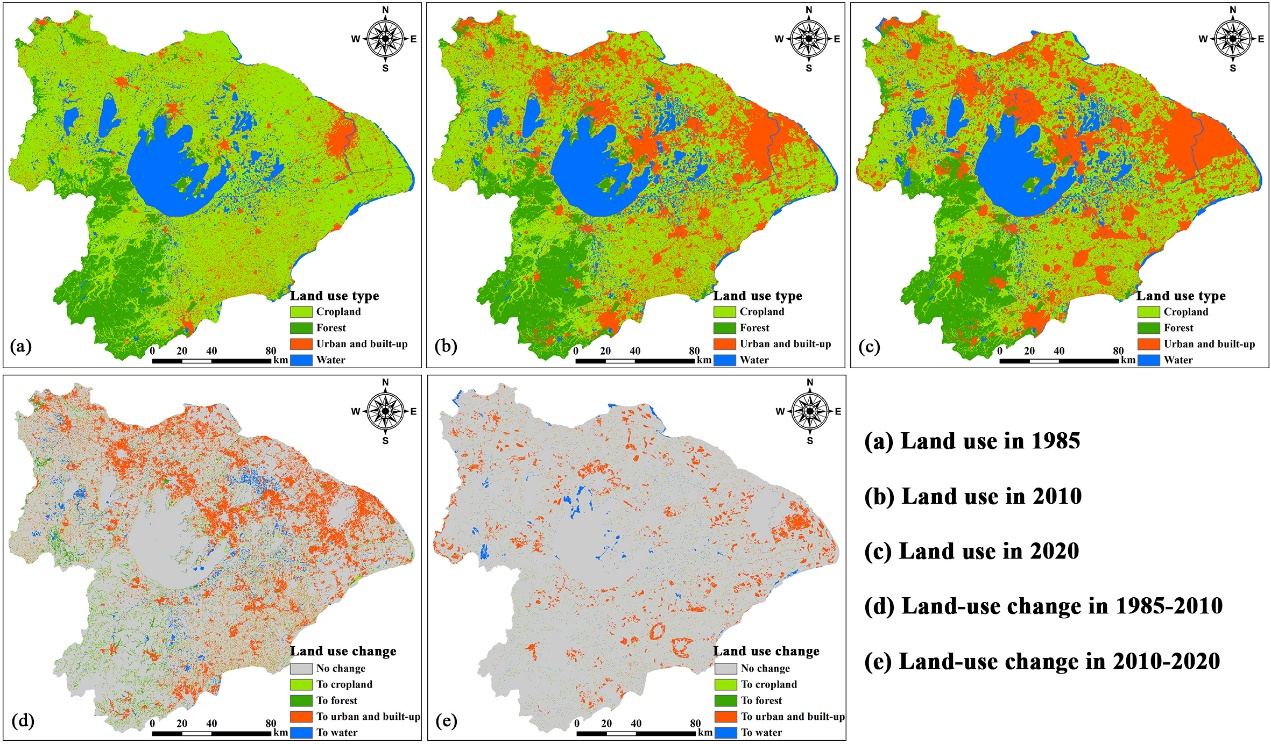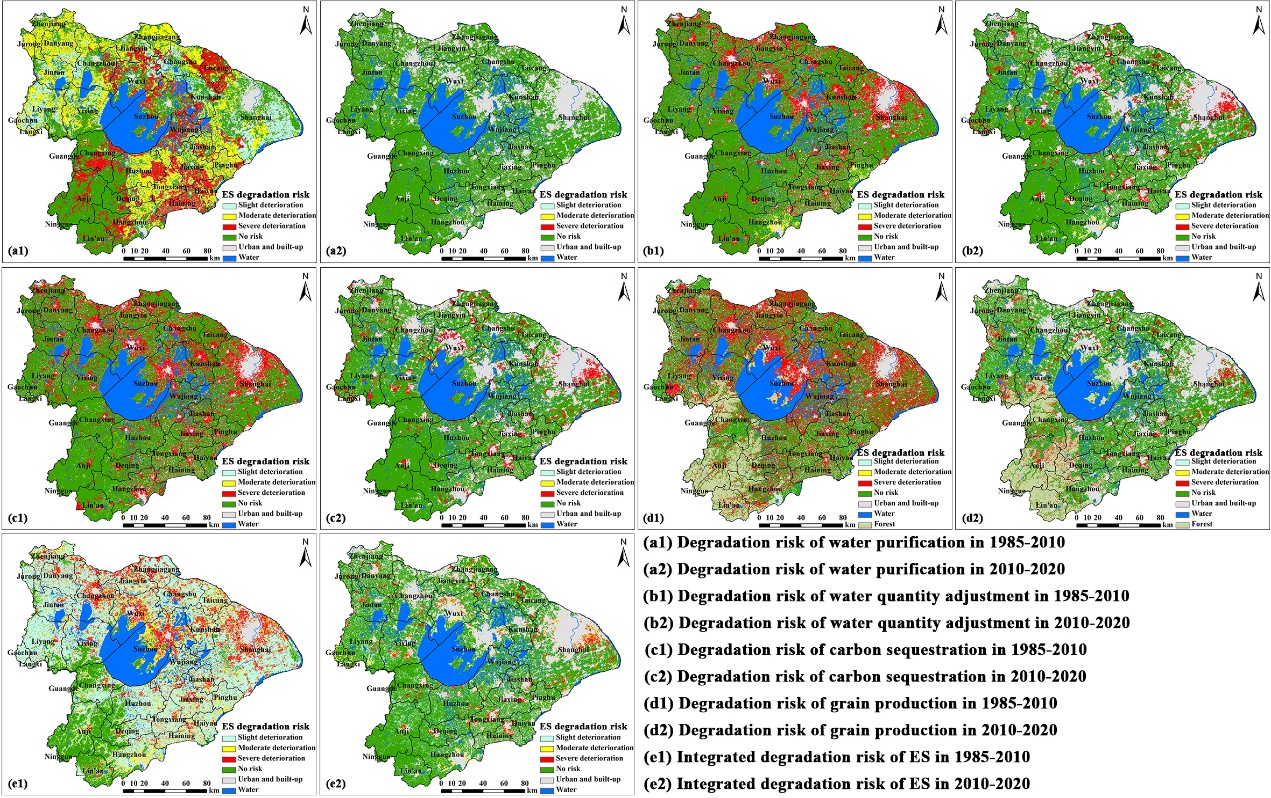Ecological risk assessment of ecosystem services in the Taihu Lake Basin of China from 1985 to 2020
There are tremendous theoretical, methodological and policy challenges in evaluating the impact of land-use change on the degradation of ecosystem services (ES) at the regional scale. This study addresses these challenges by developing an interdisciplinary methodology based on the Procedure for Ecological Tiered Assessment of Risk (PETAR). This novel methodology integrates ecological models with a land-use change model. This study quantifies the multi-dimensional degradation risks of ES in the Taihu Lake Basin (TLB) of China from 1985 to 2020. Four key ES related to water purification, water quantity adjustment, carbon sequestration and grain production are selected. The study employs models of Denitrification-Decomposition (DNDC), Soil-Water-Atmosphere-Plant (SWAP), Biome-BGC and Agro-ecological Zoning (AEZ) for assimilations. Land-use changes by 2020 were projected using a geographically weighted multinomial logit-cellular automata (GWML-CA) model. The results show that rapid land-use change has posed a great degradation risk of ES in the region in 1985–2020. Slightly less than two-thirds of the basin experienced degradation of ES over the 1985–2010 period, and about 12% of the basin will continue to experience degradation until 2020. Hot spots with severe deterioration in 2010–2020 are projected to be centered around some small and less developed cities in the region. Regulating accelerated urban sprawl and population growth, reinforcing current environmental programs, and establishing monitoring systems for observing dynamics of regional ES are suggested as practical counter-measures.

Framework of the intergrated degradation risk assessment of ES

Land-use change in the Taihu Lake Basin, 1985-2020

Degradation risk of ES in the TLB in 1985-2020
附件
